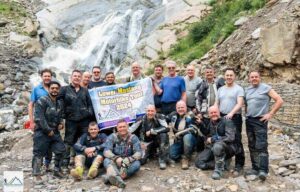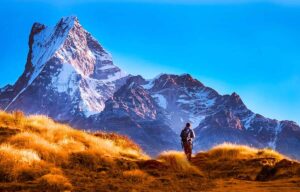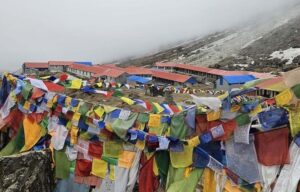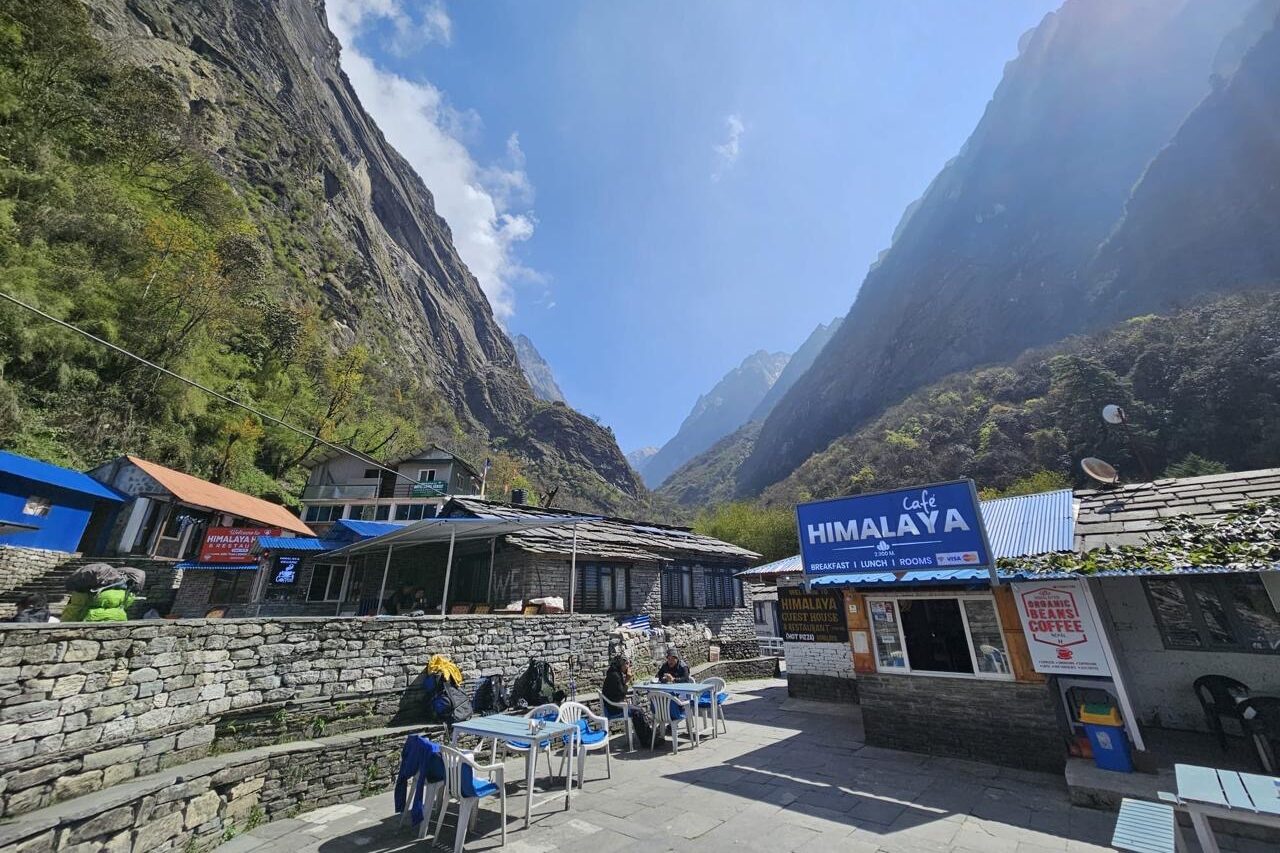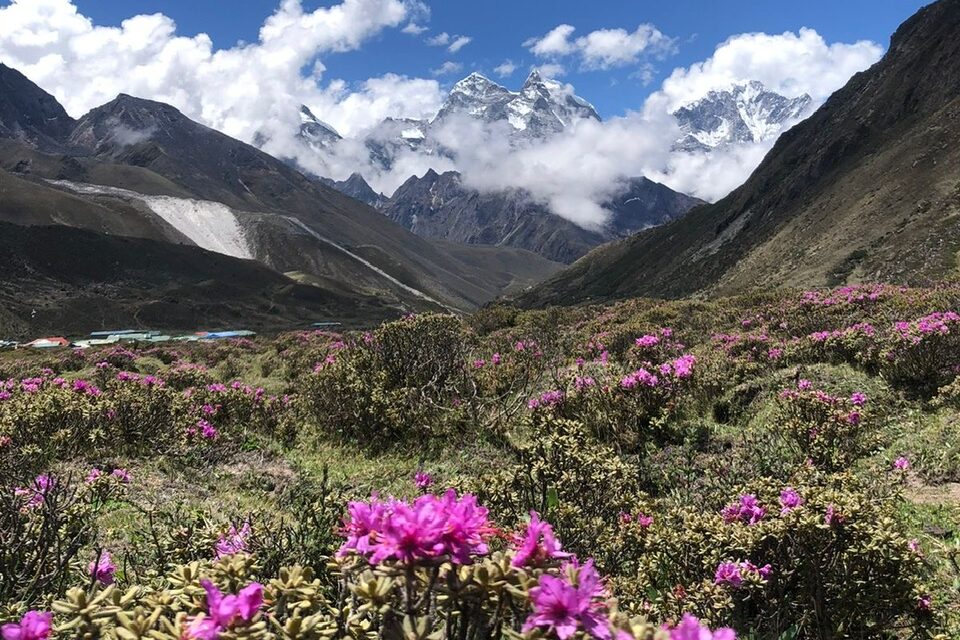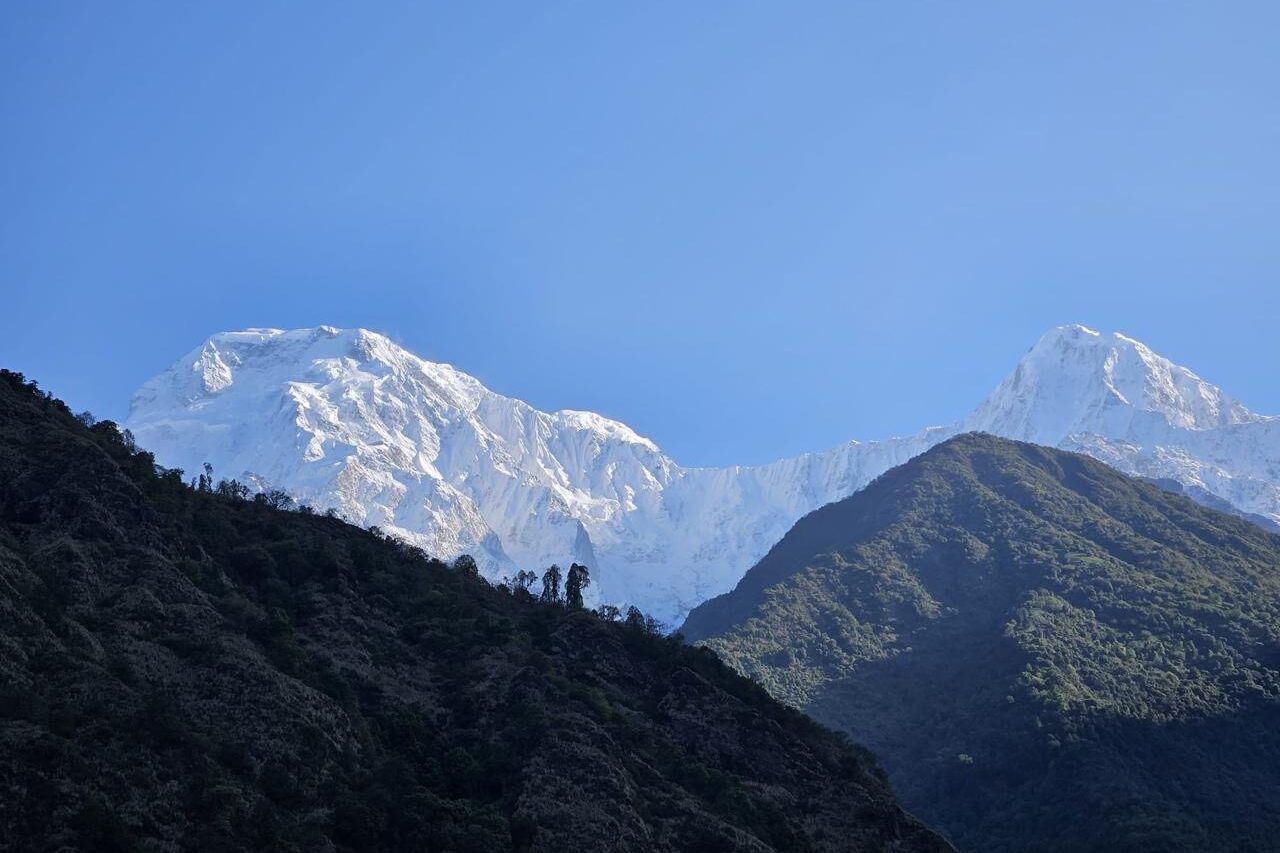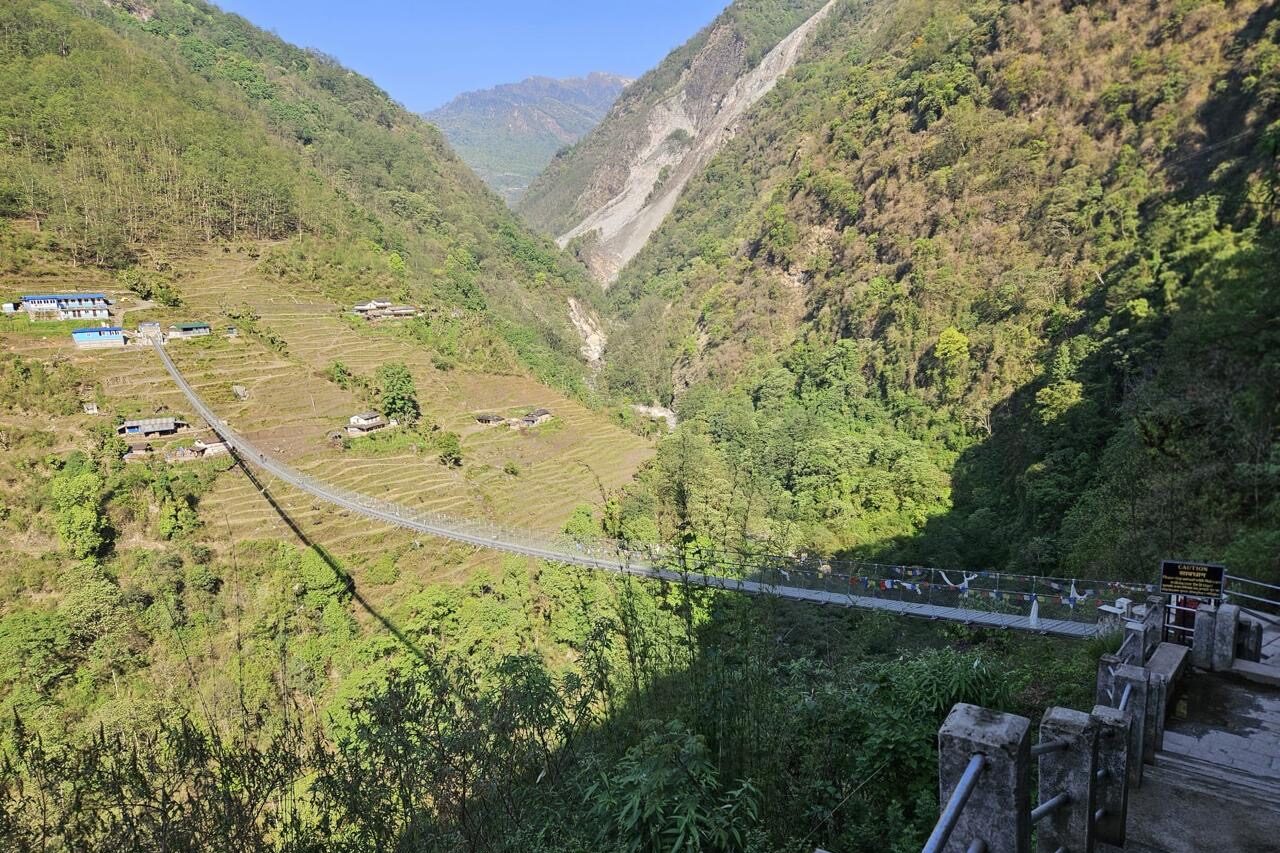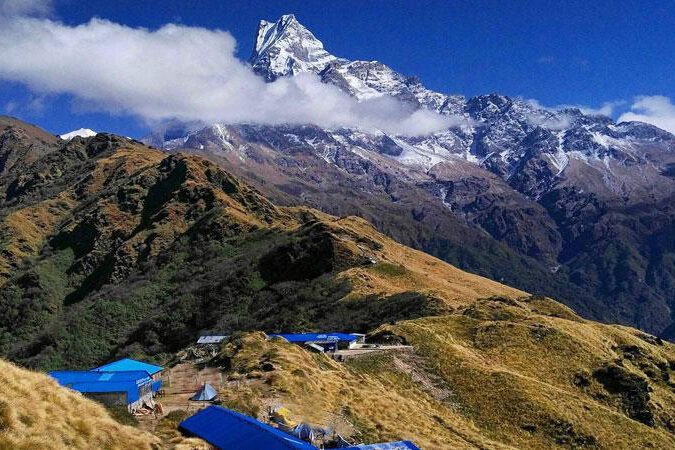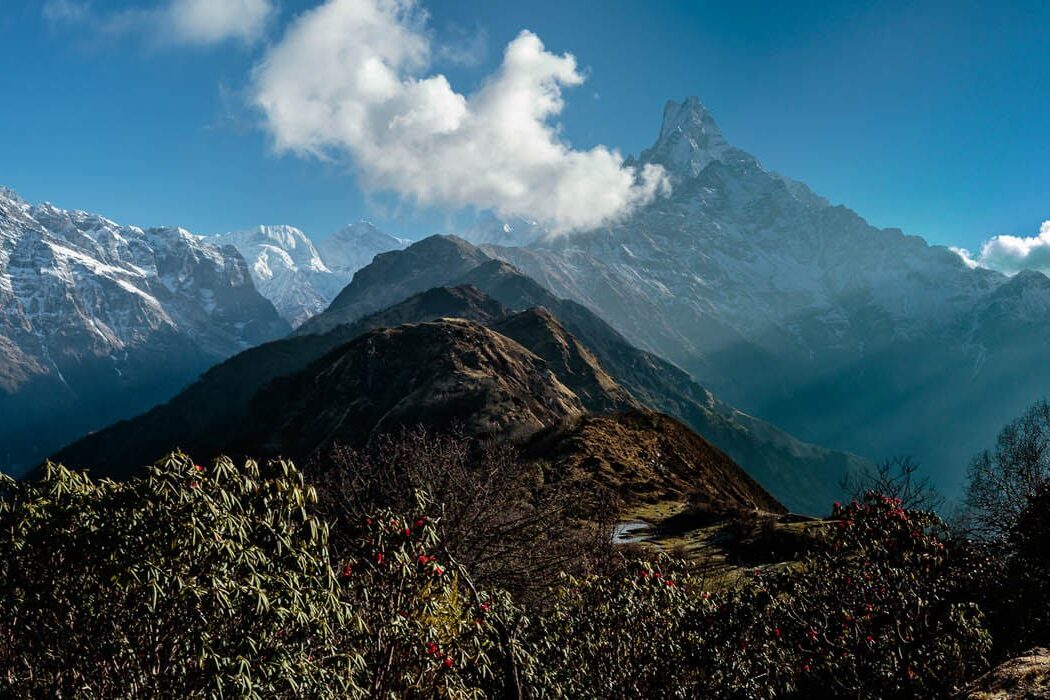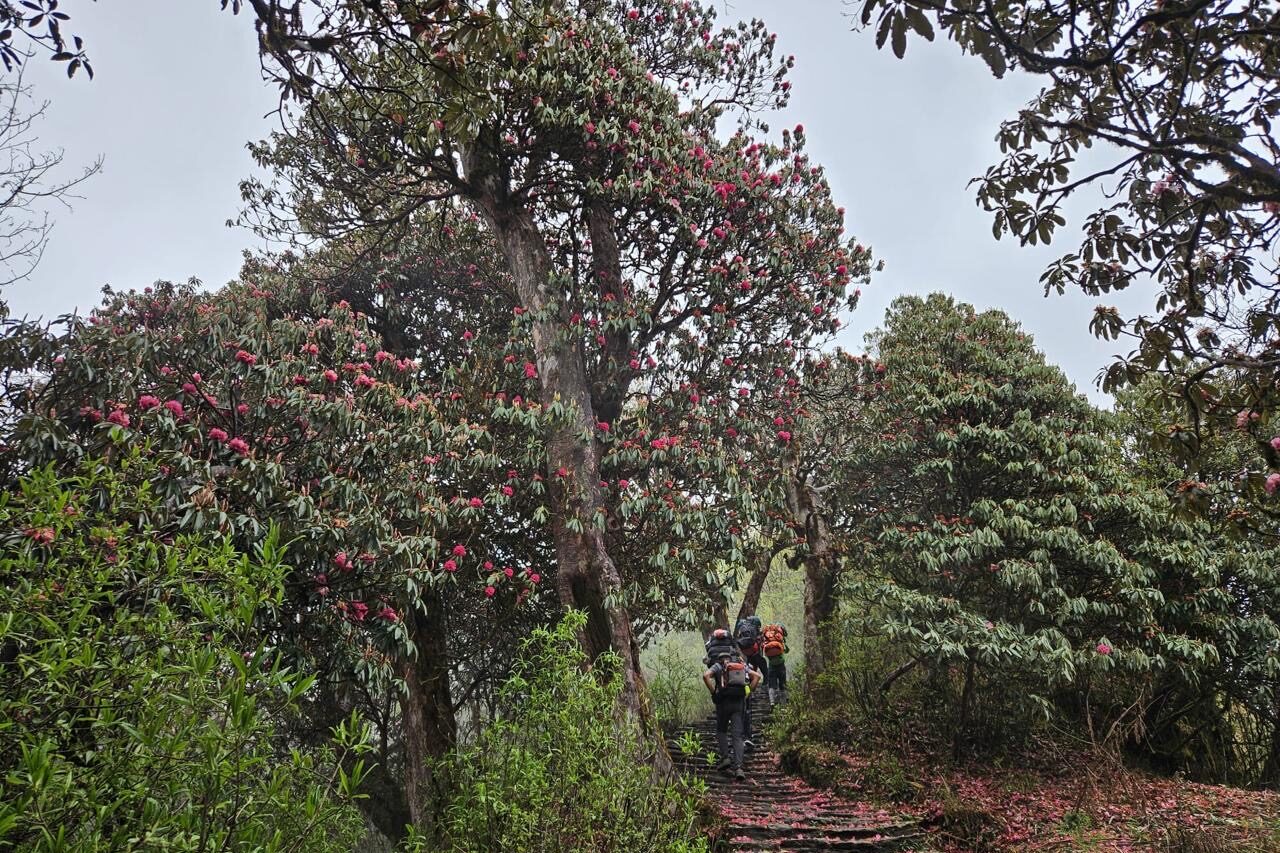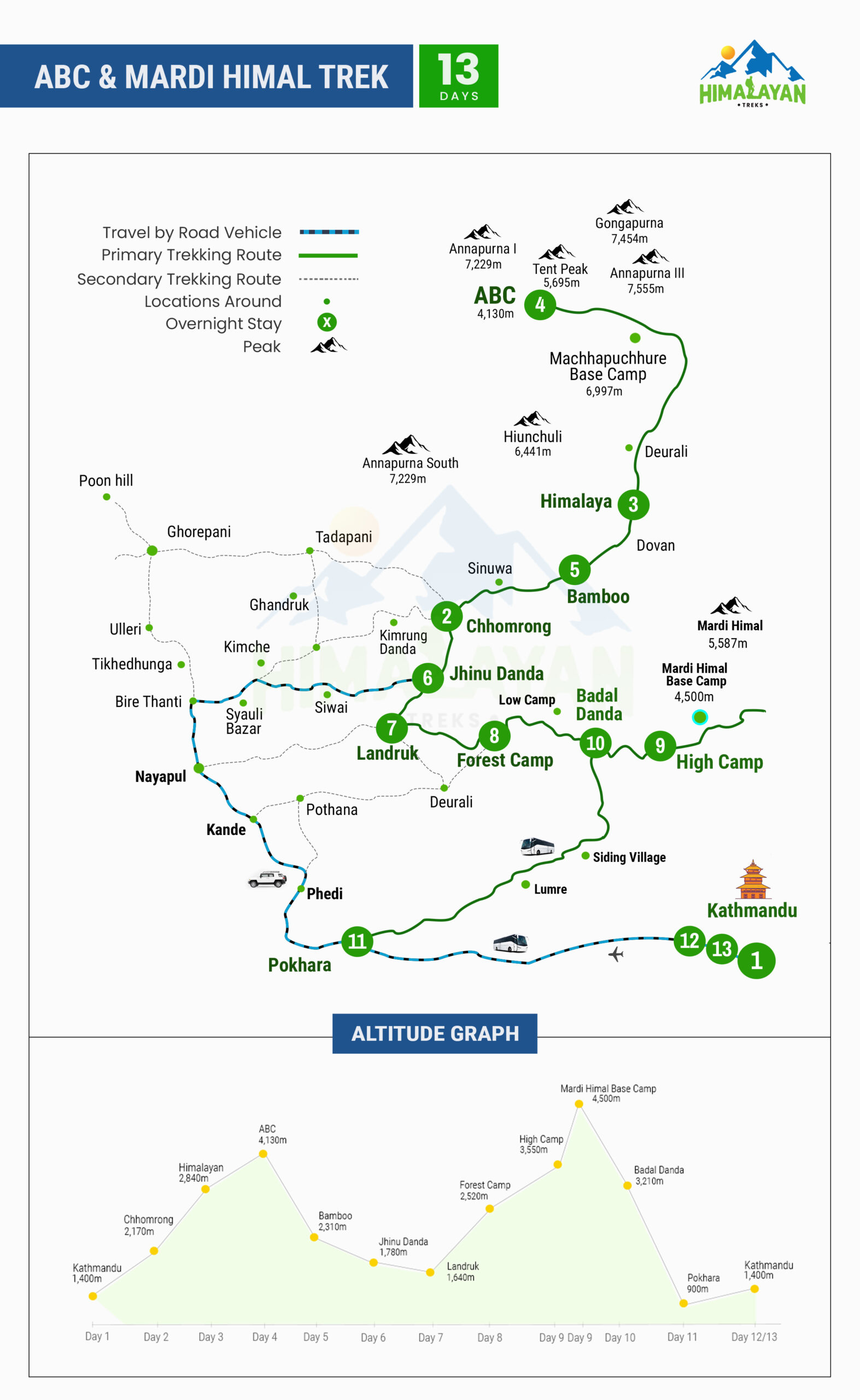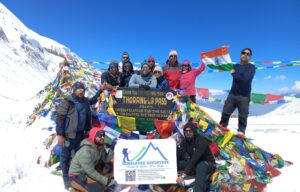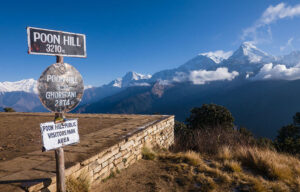The Annapurna Base Camp & Mardi Himal Trek is a captivating journey through the diverse landscapes of the Annapurna region in Nepal. This trek combines the classic Annapurna Base Camp route with the lesser-known Mardi Himal trail, offering trekkers a unique and enriching experience. Here’s everything you need to know to embark on this adventure of a lifetime.
Trek Difficulty:
The Annapurna Base Camp & Mardi Himal Trek is rated as moderate to challenging. Trekkers should have good physical fitness and be prepared for long hours of walking, varying terrain, and altitude gains. While the trails are well–defined, some sections may involve steep ascents and descents. It’s essential to undertake some preparatory hikes and cardiovascular exercises before starting this trek.
Altitude Considerations:
Altitude sickness is a potential risk when trekking in the Himalayas. The trek to Annapurna Base Camp reaches an altitude of 4,170 meters (13,685 feet), while the Mardi Himal Base Camp excursion reaches approximately 4,500 meters (14,764 feet). To mitigate the risk of altitude sickness, the itinerary includes gradual acclimatization days. Trekkers are advised to stay hydrated, ascend slowly, and listen to their bodies. Symptoms of altitude sickness include headache, nausea, dizziness, and shortness of breath. If experiencing severe symptoms, it’s crucial to descend to a lower altitude immediately.
Duration and Itinerary:
The Annapurna Base Camp & Mardi Himal Trek typically takes around 12-13 days to complete, including arrival and departure days. The detailed itinerary provided earlier outlines the daily trekking routes, accommodations, meals, and highlights of the journey. It’s important to follow the itinerary closely and adhere to the guidance of the trekking guide.
Accommodation:
Accommodation during the trek is arranged in teahouses or lodges along the route. These establishments offer basic amenities, including twin–sharing rooms with beds and blankets. While the accommodations are comfortable, they may be rustic and lack modern luxuries. Trekkers should be prepared for shared bathroom facilities and limited access to hot water. It’s advisable to bring a sleeping bag for added warmth and comfort, although blankets are provided in most teahouses.
Meals:
The trek package includes full board meals, consisting of breakfast, lunch, and dinner. Meals are typically served buffet–style at the teahouses and offer a variety of Nepali and international dishes. Common menu items include rice, dal (lentil soup), vegetables, noodles, pasta, potatoes, and Tibetan bread. Meat options such as chicken, yak, and buffalo may also be available. Vegetarian and vegan options can be accommodated upon request. Trekkers are advised to carry energy snacks such as nuts, chocolate, and energy bars to supplement their meals during the trek.
Permits and Documentation:
Before embarking on the trek, trekkers are required to obtain the necessary permits and documentation. This includes the Annapurna Conservation Area Permit (ACAP) and the Trekkers‘ Information Management System (TIMS) card. These permits can be obtained through authorized trekking agencies in Kathmandu or Pokhara. Additionally, trekkers must carry a valid passport and passport–sized photographs for permit processing.
Guide and Porter Services:
Hiring a licensed trekking guide is highly recommended for the Annapurna Base Camp & Mardi Himal Trek. Experienced guides are familiar with the trails, local customs, and emergency procedures, enhancing the safety and enjoyment of the trek. Additionally, porters can be hired to carry heavy backpacks, allowing trekkers to focus on the journey without the burden of excessive weight. Guide and porter services can be arranged through trekking agencies or independently upon arrival in Kathmandu or Pokhara.
Packing List:
Packing appropriately for the trek is essential to ensure comfort, safety, and enjoyment throughout the journey. Here’s a comprehensive packing list for the Annapurna Base Camp & Mardi Himal Trek:
Clothing: Lightweight, moisture–wicking trekking shirts and pants, insulated jacket, fleece or woolen layers, waterproof and windproof jacket, thermal underwear, hiking socks, gloves, and a warm hat.
Footwear: Sturdy hiking boots with ankle support, comfortable trekking socks, and sandals or lightweight shoes for relaxing in teahouses.
Gear: Backpack (30-40 liters), sleeping bag, trekking poles, sunglasses, sunscreen, lip balm with SPF, headlamp or flashlight with extra batteries, and a refillable water bottle or hydration system.
Personal Items: Passport and permits, personal identification, travel insurance, toiletries, hand sanitizer, wet wipes, tissue paper, and any prescribed medications.
Miscellaneous: Snacks and energy bars, camera or smartphone with extra batteries, power bank, trekking map or guidebook, and a lightweight daypack for day excursions.
Weather and Best Time to Trek:
The best time to undertake the Annapurna Base Camp & Mardi Himal Trek is during the spring (March to May) and autumn (September to November) seasons. During these months, the weather is generally stable, with clear skies, mild temperatures, and minimal precipitation. Spring brings blooming rhododendron forests, while autumn offers stunning views of the snow–capped peaks against a backdrop of blue skies. Trekking during the monsoon season (June to August) is not recommended due to heavy rainfall, slippery trails, and the risk of landslides.
Health and Safety:
The health and safety of trekkers are paramount during the Annapurna Base Camp & Mardi Himal Trek. It’s important to stay hydrated, eat nutritious meals, and get adequate rest throughout the journey. Trekkers should be aware of the symptoms of altitude sickness and notify their guide if they experience any discomfort or illness. Emergency evacuation services are available in case of serious medical emergencies. It’s advisable to purchase comprehensive travel insurance that covers trekking activities, including emergency medical evacuation and repatriation.
Conclusion:
The Annapurna Base Camp & Mardi Himal Trek is a remarkable adventure that offers trekkers the opportunity to immerse themselves in the breathtaking beauty of the Himalayas. With proper preparation, guidance, and a spirit of adventure, this trek promises unforgettable experiences and lifelong memories. Whether marveling at the panoramic views from Annapurna Base Camp or exploring the pristine landscapes of Mardi Himal, the journey is sure to leave a lasting impression on all who undertake it.
